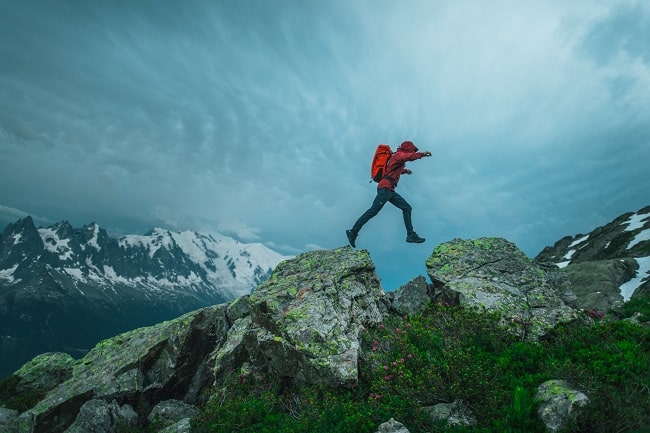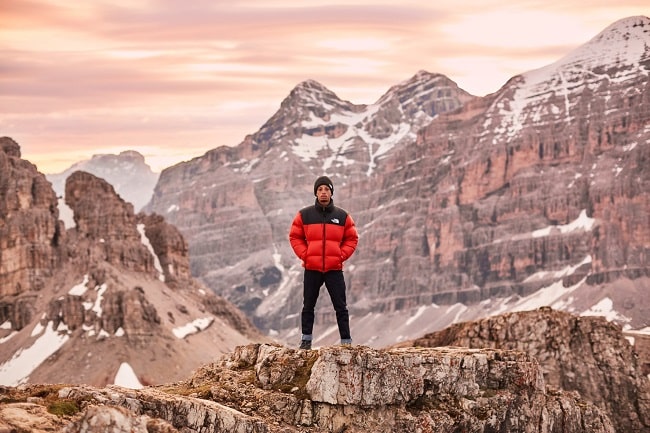1
HOME > Essentials >
CLOTHING & GEAR SHOPPING GUIDE FOR OUTDOORSMEN
Written by Menswear Style in Essentials on the 11th March 2019

There has always been an unspoken bond between man and nature, where men and women worth their salt venture into the wilderness not only to test themselves, but also as a way to slake their thirst for adventure in an increasingly smaller world. In the 21st century where technology is king, and electronics provide all the comfort anybody would ever need, there are still those who would prefer to risk their lives for the sake of spending just a small amount of time with nature, just as their ancestors did before them. Does this appeal to you? Then maybe you’re an outdoorsman yourself. Before you start heading out into the wilderness, however, it pays to be prepared. Nature itself yields to no one, so carrying the right kinds of tools could mean life and death in a place so far from human civilisation. Here is a short checklist of essential items you’ll need while exploring the great outdoors.
Understanding what is necessary
Before we go into the list, you should first ask yourself what you aim to do. Every person has their own idea of what is necessary. One man might say that he needs a good utility knife more than he needs a GPS device, while another might say that a reliable fire source is more important. While no right answer exists as a universal one for every outdoorsman, it’s easier to prioritise one item over another based on what you plan on doing. Do you plan on camping out for days on end? Are you out to hunt wild game? Are you only after a short relaxing hike through a forest trail? Do you plan on scaling a snow capped mountain? What you plan on doing has a huge impact on what you need to bring with you.

1. Navigation
One of the most important things while out in the wilderness is knowing where you are, where you have been and where you are going. The great outdoors can be a dangerous place for the unoriented. One wrong turn is enough to spell disaster to your trip, so make sure you’re equipped with the right items to help you with orienteering. A good map of the area you are planning on visiting and a compass can be enough for your navigation needs. If you’ve been bird watching and suddenly got lost, your birding binoculars can help you with re-orienting yourself with topographical features in the immediate area. You can also bring a GPS device with you, just be aware that it might prove useless if you’ve lost signal coverage or the battery runs flat.
2. Protection from the Elements
Naturally, being outside means you don’t get to enjoy the comforts of a shelter, unless you’ve brought a tent with you. This means you’re very likely to be exposed to the sun, as well as the cold, depending on where you are. Make sure you bring the appropriate protection. Bring an SPF 30 sunblock or stronger, if you think it necessary. Having the right sun protective clothing, such as shirts with long sleeves or wide-brimmed hats, will also help you immensely. Many anglers would recommend getting fishing hats, which offer adequate protection from the sun if you need to spend hours on end out in the open. As for the cold, make sure you’re wearing enough layers to keep you warm in case you may need to sleep outside of a tent without the benefits of a campfire. It’s generally a better idea to have numerous layers of clothing rather than one or two thick pieces of outerwear, since it’ll make it easier to add or remove clothing layers one at a time, depending on how the temperature changes. Clothing made from polypropylene are excellent at insulating, as are natural fabrics like wool and silk. Many experienced outdoorsmen would say that cotton is a bad choice, because it absorbs water too much.

3. Lighting
Knowing where you are going when visibility is low can be very beneficial. A lot of expert mountaineers prefer to use headlamps over other sources of light, as it allows them to free up their hands to do other things that don’t involve holding a light. There are plenty of LED headlamps in the market that provide adequate lighting and have long battery lives.
4. Fire
Also a staple in wilderness situations is the creation of fire, since it will help you keep warm, help you sanitise water as well as cook food. There are plenty of fire starting options to choose from such as waterproof matches, tinder kits, windproof lighters and fire strikers, which are basically flints attached to keychains.

5. Food and water
Depending on the amount of time, or the area you plan on visiting, it’s a good idea to pack as much food as you’ll need, but not too much. If you only plan on going to a wilderness that’s just a few square miles, you can probably get away with not packing four days’ worth of food and water. Another good alternative to carrying water is to simply carry water treatment tablets, or water filters, so you can simply drink from almost any water source you come across.
While carrying the right items with you can improve your chances of survival significantly, nothing beats knowledge when it comes to adventuring in the outdoors. Without the right knowledge or thorough research of the environment you plan on exploring, any items you bring with you, essential or not, will just weigh you down. When it comes to nature, always expect the unexpected.
Trending
2
3
4
5
6
7
8
9
10









